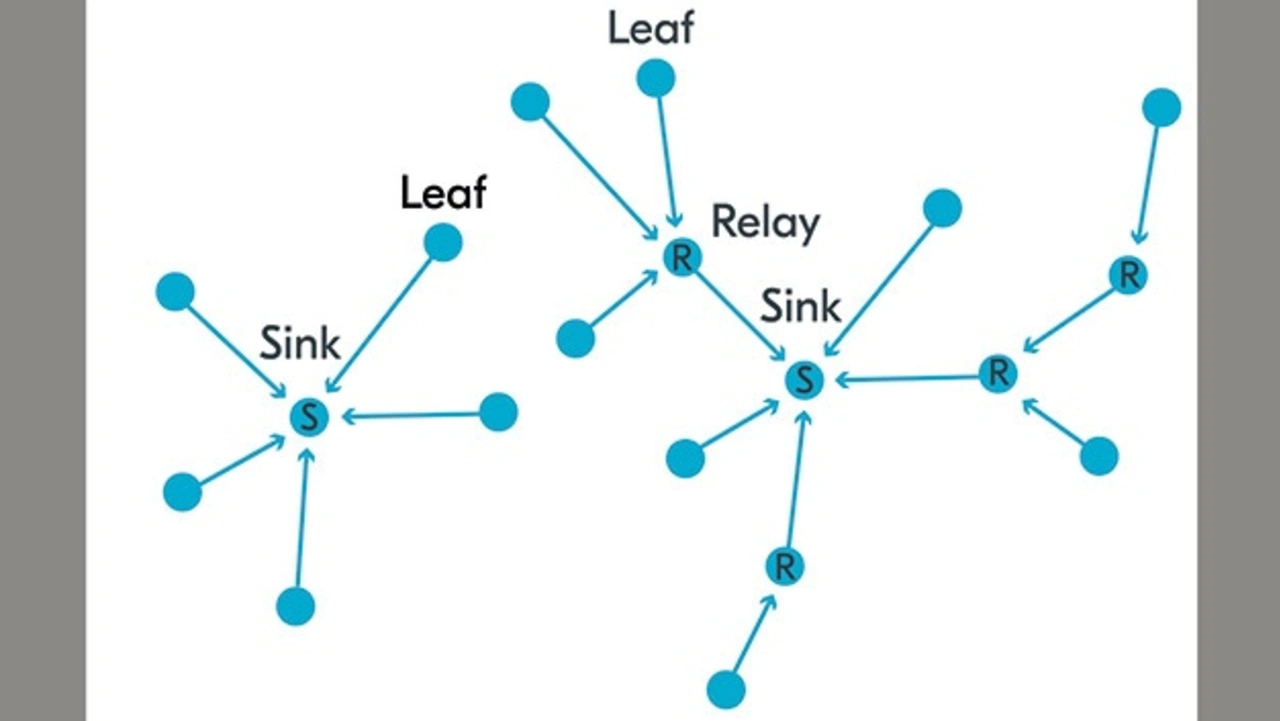License-free frequency band for 5G
Could DECT-2020 democratize massive IoT in 5G?
Fortsetzung des Artikels von Teil 3
Medium Access Control
The current Medium Access Layer (MAC) specification defines point-to-point, star- and mesh-network topologies.
DECT-2020 uses a 32-bit network ID and 32-bit device ID to support ultra high-density node networks that for practical purposes have no upper limit. The first 24-bits of the 32-bit Network ID are used to identify the network uniquely. The remaining 8 ‘least significant bits’ (or LSBs) are selected locally to differentiate between local radio networks. When combined with the 32-bit device ID, up to four billion unique addresses are supportable within a single network.
From the Physical Layer Control Field transmitted on the Physical Control Channel of the Physical Layer, each receiver can identify Network ID, Transmitter ID, and transmission power amongst many things. Thus, all receivers become aware of what networks are active in the local area and can use that information for spectrum coordination. Different networks can easily coexist and cooperate in the same area due to this key feature in the lower network layers.
In a DECT-2020 network, a device is defined to be a Leaf, Relay or Sink node:
- Sink Nodes are the nodes with a backbone connection.
- Relay Nodes are the nodes in the network which do not have backbone connection but relay the traffic of their connected Leaf nodes towards Sink nodes and vice-versa.
- Leaf Nodes are nodes in the network that do not have any children. Leaf nodes are connected to Relay nodes or directly to Sink nodes.

In device provisioning the role of Leaf, Relay or Sink node can be given to each radio device. However, the role selection can also be autonomous and used to accomplish self-organized, self-healing or other important network characteristics.
If a Relay node is for some reason removed or lost from the network, it is possible for the network to heal and re-route data between the affected Sink and Source, assuming there is another node in the network that is placed with sufficient physical range to fit the role.
Furthermore, in a multi-radio implementation having for instance LTE and DECT protocol stacks on the same device, one could easily see the attractive prospect of any node promoting itself to Sink node, if required, to solve, for example, network congestion problems in a high-traffic situation.
This can all be done automatically without replacing infrastructure or booking an expensive on-site engineering visit. There is also a relatively low hardware cost incurred from supporting two protocol stacks on a single device – avoiding much higher operating and network infrastructure change cost over an extended application operating life of even several decades.
In a mesh network the Relay node may also give up its role as Relay and continue as Leaf node to save energy. This is relevant where a relatively greater number of Sinks is established on the network, allowing more economical star-like organization.
Network discovery is handled with so-called Network and Cluster beacons. Each radio cluster, led by a Relay node, periodically transmits these beacon messages. The purpose of Network beacons is to speed up the network discovery process. Cluster beacons are transmitted by each cluster head. In operation this means radio devices operating in either a Sink or Relay node role. Cluster beacons are the ‘broadcast control channel’ of the local radio cluster, advertising both access mechanisms and pages to connected radio devices.
Before initiating a Cluster beacon, each radio device – either in Sink or Relay node – selects the operating channel autonomously by measuring available radio channels and selecting the one which has least usage. Clusters can operate at different beacon periodicities as dictated by use case. High availability, real-time use-cases such as factory automation may require a shorter beacon period compared to, for instance, utility metering where the sending of data is less time critical.
Going back to the case of smart city streetlights, DECT-2020 is scalable all the way from the physical layer. That scalability can help transition smart streetlights into infrastructure for other smart city deployments. A streetlight can change its role from being a Leaf node to a Relay or even Sink node as more devices are commissioned into networks nearby and do so at very limited cost.
- Could DECT-2020 democratize massive IoT in 5G?
- So what is DECT-2020?
- Physical Layer
- Medium Access Control
- Data Link Control Layer and Convergence Layer
- Why DECT-2020 is the missing wireless IoT technology








